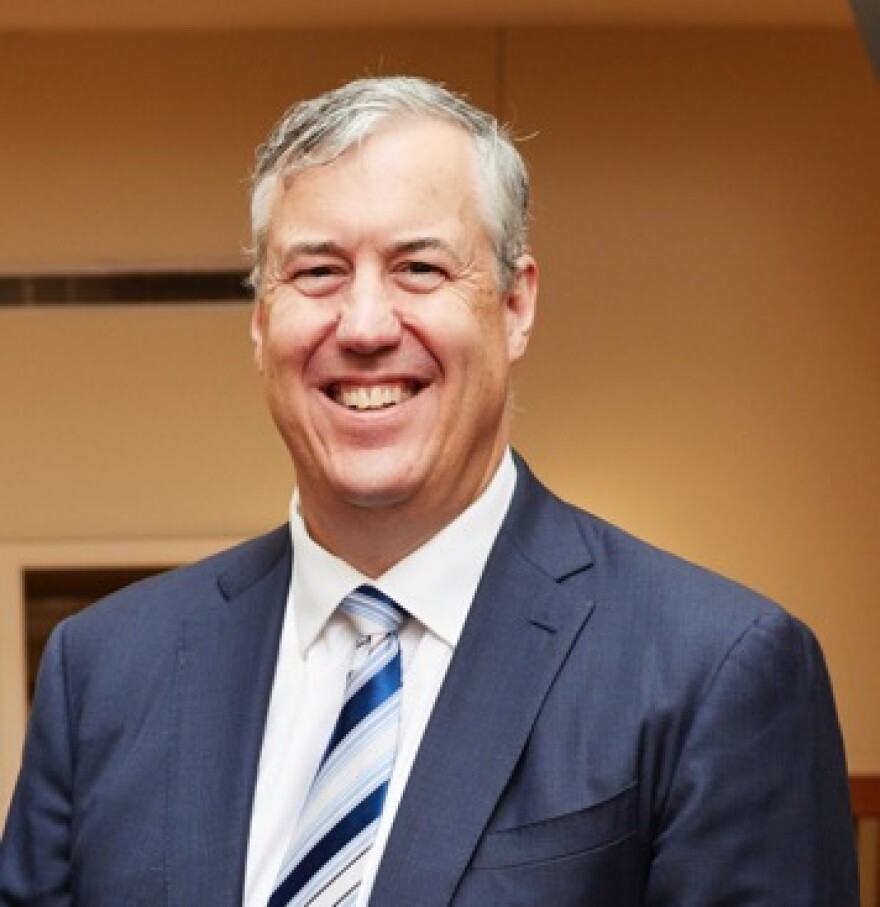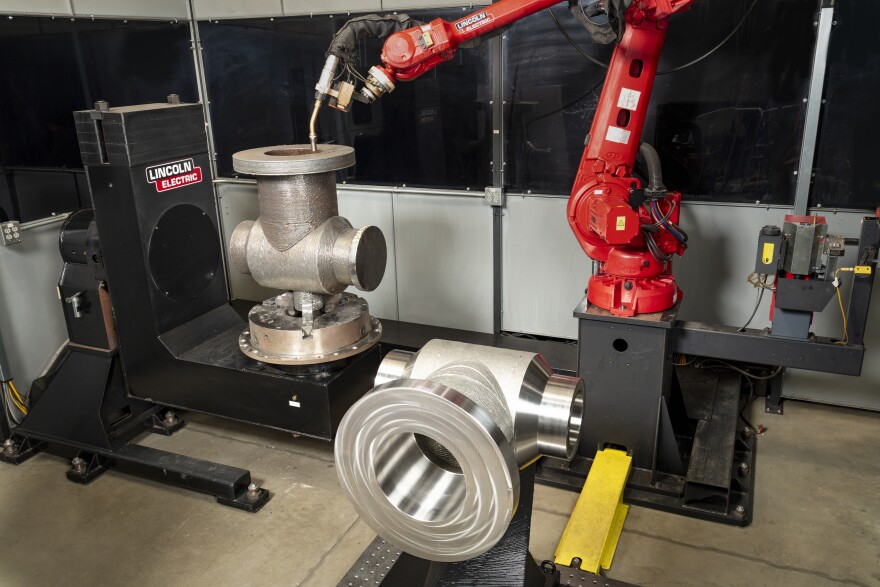Case Western Reserve University and regional partners want to create an international powerhouse of manufacturing that’s smarter, less polluting and more inclusive than manufacturing of the past.
CWRU is among 11 of the region’s leading educational, business and community organizations that landed a $1 million grant from the National Science Foundation last month to launch collaborative research and innovation focused on sustainable manufacturing across 18 counties in Northeast Ohio.
CWRU is matching the grant. The $2 million total will pay for a strategic plan that the team hopes will lead to an even bigger payday two years from now – an award of up to $160 million from NSF establishing the region as an “engine” of innovation in areas such as advanced materials; energy use and storage; capture, storage and reuse of carbon dioxide emissions; and manufacturing processes that use less energy and generate less pollution. Diversifying the region’s largely white, male workforce in manufacturing will be a top priority throughout the effort.
The money is available under the NSF Regional Innovation Engines Program, established under the CHIPS and Science Act of 2022. The national goal is to spur innovation and economic growth in regions that do not have well-established cultures of innovation and have not fully participated in the technology boom of the past few decades.

“This is an unprecedented opportunity to come together,’’ said Michael Oakes, senior vice president for research at CWRU and project director of the NSF Engines effort. “But that means work needs to be done. And that’s sort of my message to our team and to the region. It sounds like this is great, but we haven’t done anything yet. We just got an opportunity to do something great.”
CWRU’s partners in the NSF Engines project are the Greater Cleveland Partnership, the region’s largest chamber of commerce; Team NEO, a regional economic development organization; the Manufacturing Advocacy and Growth Network (MAGNET), a regional manufacturing consultant; JumpStart, a regional venture-development organization; the City of Cleveland; Cuyahoga County; Cleveland State University; the Cleveland Water Alliance, an agency focused on the region’s water-based economy; the Northeast Ohio Hispanic Center for Economic Development; and the Urban League of Greater Cleveland.
Creating a model of sustainable manufacturing
The partners have a daunting task – involving thousands of the region’s manufacturers in an effort to research, innovate and adopt cutting-edge processes, making Northeast Ohio a national model of sustainable manufacturing.
“Northeast Ohio was the nation's manufacturing powerhouse,” according to NSF’s abstract of the $1 million award to CWRU, “but poorly aligned institutions and unsustainable manufacturing practices have left a legacy of disinvestment, inequity, and environmental hazards across the region's 18 urban, suburban, and rural counties.”
The CWRU-led application for the NSF Engines award noted that the region’s industrial legacy has left “staggering” rates of poverty in Akron, Canton, Cleveland and Youngstown.
“These communities are also almost always living in the midst of environmental hazards without any priority to clean up, creating massive health disparities,’’ the NSF Engines application stated. “The region’s transformational potential is inextricably linked to the solutions we are focused on.”
The manufacturing sector is already involved in collaborations that aim to lift sustainable and technological advances, the application noted. The NSF Engines effort will build on those efforts, which include MAGNET’s Make it Better Manufacturing Blueprint, involving key industry, academic and nonprofit leaders focused on advances in technology and talent, and the Cleveland Innovation Project, in which corporate and civic leaders promote tech-based economic growth. Like NSF Engines, both efforts emphasize diversity, equity and inclusion .
Overcoming the challenges
Challenges to making Northeast Ohio an international hub of sustainable manufacturing are the industry’s slow adoption of technology, disconnected research efforts and the lack of a shared vision and leadership, according to the NSF Engines application.
CWRU and its partners want to meet those challenges by collaborating in four areas, including technology innovation. Many companies in the region employ sustainable processes now, Oakes said. Lincoln Electric Co. does 3-D printing to produce large metal parts, saving energy and reducing waste. Lubrizol Corp., a specialty chemicals manufacturer, offers plant-based alternatives to petroleum-based products.
Regional research partnerships are plentiful, but “the surface has barely been scratched in terms of sustainable manufacturing processes,’’ according to the NSF application.

The NSF Engines participants will also collaborate on technology adoption for large and small businesses; developing a workforce that meets the needs of sustainable manufacturing; and setting leadership and governance that has DEI at its core.
The Urban League of Greater Cleveland’s role will be to hold stakeholders accountable for the DEI efforts, said Marsha Mockabee, president and chief executive officer of the Urban League. That includes measuring DEI progress and “helping people see how diversity, equity and inclusion cuts across all of the work.”
The NSF Engines makes sense and is doable, said Mockabee, who has guided the Urban League’s involvement in a number of regional economic development efforts.
“We've never really recuperated from the (industrial) decline,” Mockabee said. “We never rolled into a new economy, if you will. … Advanced manufacturing is a large opportunity here in northeastern Ohio.”
Oakes said he pitched CWRU taking the lead on an NSF Engines proposal when he came to the university 10 months ago from the University of Minnesota. He was recruited to CWRU by President Eric Kaler, whom Oakes worked for when Kaler was president of the University of Minnesota.
“I said, hey, I know I'm the new guy, but let's go for this,” Oakes said during a recent interview. “With terrific cooperation from my new team here, and all of our partners in the region – corporations, schools, governments, really everybody – we just started coming together. I’ve had some experience in putting very diverse teams together and managing expectations and yet having people focus on a mission.”
Oakes believed the NSF Engines proposal aligns with the Biden administration’s priorities of bolstering economies in the Midwest and “not just the coasts”, bringing more off-shore manufacturing back to the U.S. and protecting the environment.
“I thought this is a perfect storm to pitch to the government … that Northeast Ohio should become the leader in sustainable manufacturing,” Oakes said. “So we make stuff but we make stuff smartly, environmentally conscious, energy wise, and that would transform the region.”
Taking it to the business community
Baiju Shah, president of the Greater Cleveland Partnership, was among well-connected leaders who helped Oakes boost the idea to the region’s business community.

“Our leading companies are committed to sustainability for business growth as they see a strategic opportunity and they're doing it together, not going it alone," Shah told the Case Daily, CWRU’s news-and-information site, about the NSF Engines proposal.
CWRU and its partners will spend the next 20 months and $2 million crafting a strategic plan and application they hope will convince NSF to give them what Oakes called “the real money” – up to $160 million over 10 years.
Expenses in the coming months include the salary of co-project director Nicholas Barendt, who is executive director of CWRU’s Institute for Smart, Secure and Connected Systems; meeting and event planning; money to the Urban League, Hispanic economic development center and community groups for NSF Engines efforts; seed money for research and pilot tests; and money to school districts to start developing talent in sustainable manufacturing, Oakes said.
“So getting younger folks to think about how they can be an engineer making, you know, parts for an aircraft carrier and saving the environment in doing so,’’ Oakes said. “Or people who will be technicians working on machines. So jobs and security and all that goes with the American dream. That’s a big part of it.”
Dozens of regional collaborations across the country will be competing for a limited number of the NSF awards of up to $160 million. Oakes said his team must show NSF evidence of early successes, collaboration and excellence in equity and inclusion over the next 20 months.
“It’s certainly not guaranteed that we’ll get picked,” Oakes said. “We’ve got work to do and that’s exciting and scary at the same time.”
Other NSF Engine efforts in NEO
While CWRU plans to apply for the award of up to $160 million in 2025, the NSF will announce a first round of up to five of the large awards this fall. This week, the NSF named 34 regional collaborations that are semifinalists for those awards – and two of the collaborations involve major players in Northeast Ohio.
One is led by the Cleveland Clinic Foundation and seeks to close the gaps in health inequity. It involves 27 partners, including universities, healthcare systems, economic development agencies and companies, notably IBM and Medtronic. Their NSF Engine footprint extends from Cleveland and Northeast Ohio to Detroit and southeast Michigan.
The proposal tackles health inequity with research and technology that promotes healthy behaviors, improves access to care, and addresses social determinants of health, such as employment, education, housing, food security and chronic disease. They’ll also create an infrastructure that supports start-ups, new businesses, and innovators focused on health equity, so they get their inventions to the market sooner. The NSF Engine effort also aims to close equity gaps in education to prepare the future workforce.
The second NSF Engine proposal, based in Brook Park, includes NASA Glenn Research Center and the Ohio Aerospace Institute in a statewide push to spur Ohio’s space-based economy.
Much of the focus will be on the George Washington Carver Science Park Accelerator and Regional Catalyst established last year at Ohio State University. The science park will work in tandem with a commercial research lab in space, planned for low-Earth orbit by 2027. The proposal is led by the Universities Space Research Association in Washington, D.C., and has 30 partners so far, including universities, companies, venture capital firms and federal agencies.
The NSF said it will interview each of the semifinalists to assess the leadership’s ability to rapidly mobilize their teams; their competitive advantages; their budget and resources for research and development; their capacity to turn research into beneficial products and services; and workforce development efforts.
The semifinalists “represent an emerging hub of innovation and lend their talents and resources to form the fabric of NSF's vision to create opportunities everywhere and enable innovation anywhere," NSF Director Sethuraman Panchanathan said in a press release. "These teams will spring ideas, talent, pathways and resources to create vibrant innovation ecosystems all across our nation."



